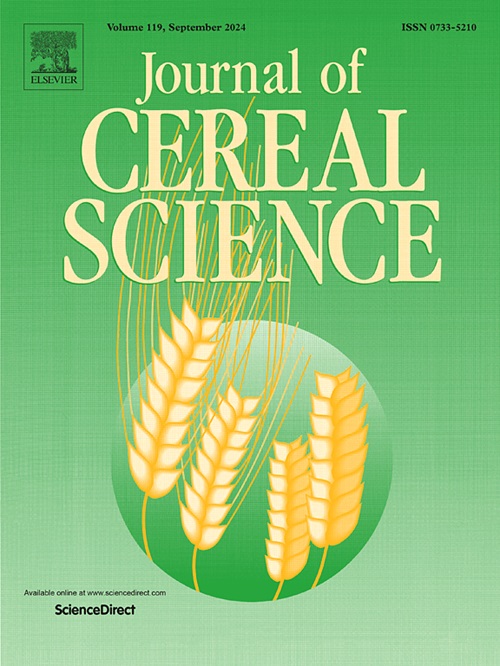Comparative analysis of different drying methods in the production of solid oat milk beverages: Insights into physicochemical properties and quality attributes
IF 3.7
2区 农林科学
Q2 FOOD SCIENCE & TECHNOLOGY
引用次数: 0
Abstract
This study evaluates the effects of freeze-drying, hot-air drying, and spray drying on the physicochemical properties and quality attributes of solid oat milk derived from oat core flour (OCF). Different enzymatic treatments were applied to enhance starch and protein degradation before drying. Results showed that freeze-drying retained the highest water-holding capacity (WHC) due to its porous structure, while hot-air drying induced Maillard reactions, reducing lightness and whiteness. Spray-dried samples presented acceptable hydration and color properties, which showed comparable level to the market product. Besides, Spray-dried samples exhibited higher zeta-potential (−30 mV), indicating improved colloidal stability. Enzymatic treatments significantly reduced centrifugal sedimentation rate (SR) and apparent viscosity, particularly in spray-dried samples, which formed stable starch-protein/lipid complexes. Fourier transform infrared spectroscopy (FTIR) and X-ray diffraction (XRD) revealed structural modifications in starch and protein, with spray drying promoting electrostatic interactions. Thermal analysis showed spray-dried samples had higher denaturation temperatures and enthalpy (ΔH = 1.77 J/g), reflecting enhanced thermal stability. Confocal laser scanning microscopy (CLSM) and sodium dodecyl sulfate-polyacrylamide gel electrophoresis (SDS-PAGE) confirmed uniform protein distribution and reduced aggregation in spray-dried products. Intermolecular force analysis suggested that the uniform protein distribution might be supported by the dominant ionic bonds. Correlation analysis linked protein tertiary structure to thermal stability and zeta-potential, highlighting the role of protein conformational changes in functional properties. Overall, spray drying combined with dual-enzyme treatment demonstrated optimal performance in producing solid oat milk with desirable sensory, structural, and functional properties, making it a promising method for industrial solid oat milk production.

固体燕麦乳饮料生产中不同干燥方法的比较分析:理化性质和品质属性的见解
本研究考察了冷冻干燥、热风干燥和喷雾干燥对以燕麦芯粉(OCF)为原料的固体燕麦乳理化性质和品质特性的影响。在干燥前,采用不同的酶处理来促进淀粉和蛋白质的降解。结果表明,冻干由于其多孔结构,保持了最高的持水量,而热风干燥引起美拉德反应,降低了其亮度和白度。喷雾干燥样品的水化和颜色性能可接受,与市场产品相当。此外,喷雾干燥样品表现出更高的ζ电位(- 30 mV),表明胶体稳定性得到改善。酶处理显著降低了离心沉降速率(SR)和表观粘度,特别是在喷雾干燥样品中,形成了稳定的淀粉-蛋白/脂复合物。傅里叶变换红外光谱(FTIR)和x射线衍射(XRD)揭示了淀粉和蛋白质的结构变化,喷雾干燥促进了静电相互作用。热分析表明,喷雾干燥样品具有更高的变性温度和焓(ΔH = 1.77 J/g),反映了增强的热稳定性。共聚焦激光扫描显微镜(CLSM)和十二烷基硫酸钠-聚丙烯酰胺凝胶电泳(SDS-PAGE)证实了喷雾干燥产品中蛋白质分布均匀,聚集减少。分子间力分析表明,蛋白质的均匀分布可能是由优势离子键支持的。相关分析将蛋白质三级结构与热稳定性和ζ电位联系起来,突出了蛋白质构象变化在功能特性中的作用。综上所述,喷雾干燥结合双酶处理在生产固体燕麦乳中表现出最佳的性能,具有理想的感官、结构和功能特性,是一种很有前途的工业固体燕麦乳生产方法。
本文章由计算机程序翻译,如有差异,请以英文原文为准。
求助全文
约1分钟内获得全文
求助全文
来源期刊

Journal of Cereal Science
工程技术-食品科技
CiteScore
7.80
自引率
2.60%
发文量
163
审稿时长
38 days
期刊介绍:
The Journal of Cereal Science was established in 1983 to provide an International forum for the publication of original research papers of high standing covering all aspects of cereal science related to the functional and nutritional quality of cereal grains (true cereals - members of the Poaceae family and starchy pseudocereals - members of the Amaranthaceae, Chenopodiaceae and Polygonaceae families) and their products, in relation to the cereals used. The journal also publishes concise and critical review articles appraising the status and future directions of specific areas of cereal science and short communications that present news of important advances in research. The journal aims at topicality and at providing comprehensive coverage of progress in the field.
 求助内容:
求助内容: 应助结果提醒方式:
应助结果提醒方式:


